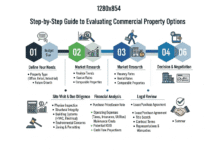Los Angeles is dealing with a big housing challenge, pushing architects to rethink affordability. People are exploring designs that make homes accessible while respecting neighborhood character. With costs rising and demand increasing, architects are coming up with innovative ways to ease the housing shortage.
Finding the balance between affordability and good design is vital for the city’s future. Testing ideas like mixed-use developments, faster building methods, and flexible zoning rules, Los Angeles architect professionals are exploring solutions that address cultural diversity and environmental factors. These approaches are helping shape strategies that benefit communities.
Designing for Density Without Losing Comfort
Making better use of urban space means rethinking how livable designs can be. Architects are working on layouts that include key features like green spaces, offering spots for relaxation and recreation. By focusing on natural light and ventilation, they aim to make even dense areas feel comfortable and uplifting. Well-thought-out layouts can create a sense of space, combining function with visual appeal in crowded neighborhoods.
Adding community gardens doesn’t just improve aesthetics—it brings neighbors together over shared activities like planting and harvesting. For instance, a small garden with designated areas for vegetables, flowers, and composting encourages collaboration. Smart planning makes dense living both practical and inviting. Inviting local residents to workshops or feedback sessions help designs align with their priorities, creating spaces that truly reflect community values.
Reimagining Construction Methods to Save Money
New building techniques can cut costs on housing projects. Modular and prefabricated construction speeds up assembly, saving time and money on labor and materials. These methods also adapt easily to different locations while keeping quality consistent. Using local materials can further reduce costs and support nearby businesses, making projects more sustainable and community-friendly.
Faster building schedules make homes more affordable. For example, a modular housing project in South Los Angeles was completed in just eight months, cutting financing costs by 20%. Shorter timelines mean families can move in sooner, reducing waitlists. Shorter timelines also simplify project coordination and reduce the risk of delays, allowing housing developments to meet deadlines while staying within budget.
Zoning Changes as a Tool for Housing Solutions
Adjusting zoning rules could unlock more affordable housing options in Los Angeles. Adding accessory dwelling units (ADUs) allows homeowners to create extra spaces on their property, boosting housing supply. This approach meets housing needs without changing the overall feel of neighborhoods. Loosening strict parking rules can also lead to multi-use developments, turning unused areas into vibrant communities that combine homes and businesses.
Flexible zoning lets architects and city planners think outside the box to meet the needs of a diverse population. Mixed-use spaces can improve walkability and make essential services more accessible. Simplifying zoning codes and reducing red tape speeds up project approvals and encourages teamwork. Local governments could host workshops where residents share their thoughts, shaping zoning updates that reflect community priorities.
Mixed-Use Developments That Bring Communities Together
Walkable neighborhoods transform daily life by bringing everything closer. Picture streets lined with cafés, vibrant markets, and local shops where people connect daily. Schools and offices nearby make life convenient while helping small businesses. Easy access to parks and gyms reduces car use, encourages walking, and fosters a healthier lifestyle. These spaces create tight-knit, thriving communities.
Mixing different functions in one area strengthens communities by encouraging connections. Picture a community square hosting weekly farmers’ markets with local artisans and food vendors. Outdoor dining areas and co-working spaces make casual conversations effortless. Adding playgrounds for kids or pop-up workshops led by residents fosters engagement and a shared sense of belonging.
Cultural and Environmental Factors in Housing Design
Recognizing the city’s cultural diversity can inspire meaningful designs. Honoring traditions and lifestyles creates a sense of belonging. Architects often work with local artists and communities to incorporate cultural elements into buildings, using features like colors, textures, and shared spaces to reflect the city’s rich heritage.
Environmental challenges also play a big role in design. In a city like Los Angeles, where weather extremes are common, homes need to be resilient. Durable structures protect residents and reduce long-term maintenance costs. Architects can choose materials and techniques suited to the local climate while keeping the area’s historic look intact.
Solving Los Angeles’ housing issues takes creativity, teamwork, and practical ideas. Architects are making housing more accessible with mixed-use developments, faster building methods, and updated zoning rules. Green spaces, cultural diversity, and eco-friendly designs keep neighborhoods livable and welcoming. Residents can get involved in planning discussions, support zoning changes, or explore options like ADUs to address housing needs. Even small efforts, like rethinking underused areas, can lead to meaningful change. Focusing on designs that reflect the city’s culture and future needs helps meet housing demands while building stronger, more connected communities that feel like home.





